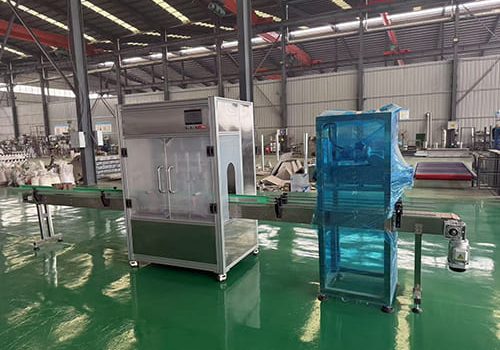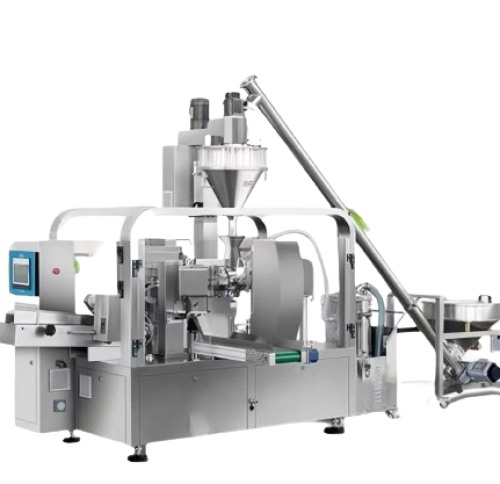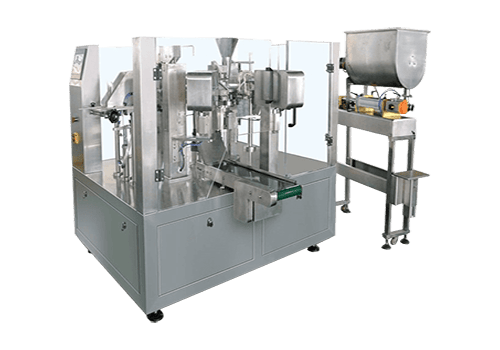
Cream Filling Machine
| Column 1 | Column 2 |
|---|---|
| Row 1, Col 1 | Row 1, Col 2 |
| Row 2, Col 1 | Row 2, Col 2 |
| Row 3, Col 1 | Row 3, Col 2 |
| Row 4, Col 1 | Row 4, Col 2 |
| Row 5, Col 1 | Row 5, Col 2 |
MeltVista Cream Filling Machine is a fully automated solution designed for precise and hygienic filling of creams, lotions, gels, and other viscous products. It features customizable 2, 4, 6, or 8 filling heads, capable of filling 0 to 100 bottles per minute with a volume range of 90-520ml per container, including jars, tubes, bottles, and pouches.
Widely used in cosmetics, pharmaceuticals, food, and personal care industries, this machine ensures high accuracy, efficiency, and consistency, making it essential for businesses requiring reliable cream filling solutions.
For companies looking to optimize production, this machine offers versatility, precision, and automation, reducing labor costs while maintaining superior hygiene and product integrity. When selecting a cream filling machine, consider key factors such as product viscosity, container type, production capacity, and industry-specific requirements to ensure the best fit for your manufacturing needs.
Cream Filling Machine Guide
Introduction Types of Filling Machines Conclusion: How to Choose a Suitable Filling Machine FAQ about Cream Filling MachinesCan a Standard Cream Filling Machine Meet Production Requirements?
- A standard cream filling machine can meet production needs for many businesses, but its suitability depends on factors like product viscosity, production volume, container type, and precision requirements.
- For small to medium-scale production, basic models with manual or semi-automatic operation may be sufficient. However, high-speed production lines in industries such as cosmetics, pharmaceuticals, and food processing often require fully automated cream filling machines with multiple filling heads to ensure efficiency, consistency, and hygiene compliance.
- When choosing a cream filling machine, consider factors like customization options, speed, filling accuracy, and integration with capping and labeling systems to optimize your manufacturing process.
Filling Machine Requirements for Large-Scale Enterprises
- Large enterprises require high-speed, fully automated filling machines to meet high production demands while maintaining precision, hygiene, and efficiency. These machines must handle various container types and viscosities, ensuring minimal downtime and maximum output.
- Key considerations include:
- Multi-head filling systems for higher throughput (e.g., 4, 6, 8, or more nozzles).
- Customizable volume settings to accommodate different product sizes.
- Integration with capping, labeling, and packaging systems for a streamlined production process.
- Compliance with industry regulations (e.g., GMP, FDA for pharmaceuticals and food).
- For cosmetics, pharmaceuticals, and food industries, investing in a high-speed, precision-controlled filling machine ensures product consistency, reduces waste, and enhances overall operational efficiency.
Types of Filling Machines
- Overflow Filling Machines – Ideal for liquids with consistent viscosity, ensuring precise fill levels in transparent bottles.
- Piston Filling Machines – Suitable for thicker products like sauces, creams, and gels, providing high accuracy.
- Gravity Filling Machines – Best for thin, non-viscous liquids, using gravity to control filling volume.
- Vacuum Filling Machines – Used for delicate products like perfumes and essential oils, preventing spillage.
- Auger and Powder Filling Machines – Designed for dry powders and granules, ensuring even distribution.
- Weighing and Net Weight Filling Machines – Perfect for high-value products, offering precise weight-based filling.
Choosing the right automatic or semi-automatic filling machine depends on product consistency, container type, and production volume to ensure efficiency and compliance with industry standards.
Choosing the Right Filling Machine
- Choosing the right filling machine is crucial for optimizing production efficiency and maintaining product quality. The selection process depends on factors like product viscosity, container type, and production volume.
- For instance, overflow filling machines are perfect for liquids with consistent viscosity like water and juices, while piston filling machines are ideal for thicker products such as creams and gels. Gravity filling machines are well-suited for thin liquids like alcohol and juices, while vacuum filling machines are used for delicate products like perfumes.
- When selecting a filling machine, also consider the automation level (automatic vs. semi-automatic), ease of maintenance, and industry-specific regulations. For large-scale production, multi-head systems may offer the best efficiency. Understanding these variables ensures that your business invests in the most cost-effective, reliable, and suitable filling solution to meet both current and future demands.
- By carefully evaluating your product requirements and consulting experts, you can ensure that your filling machine enhances both productivity and product integrity.
- Product viscosity: Thicker creams require machines with more precision, like piston fillers or vacuum fillers.
- Production speed: Machines with more filling heads or higher automation are better suited for larger production volumes.
- Container type: Ensure the machine is compatible with the specific size and shape of your containers (tubes, jars, etc.).
- Regular cleaning to avoid product buildup and contamination.
- Lubricating moving parts to reduce wear and tear.
- Inspecting seals and valves to maintain accuracy in filling.
- Routine checks on electrical components for safety and proper functionality.



